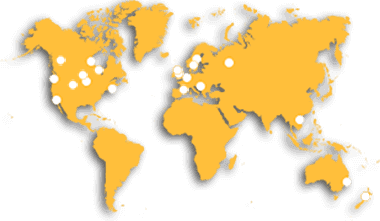
Why Page Speed is Crucial
Due to Core Web Vitals and Mobile-First Indexing everyone is (now) paying attention to page speed and as always, the majority of people are investing a lot of time, money and effort to find shortcuts or a way to trick Google. The truth is all that nonsense has been getting ripped out by the roots over the last decade by Google as they built towards a very sophisticated AI.
During all that time the real secret was to make sure your site was fully optimised. However, one could still “get away with” poorly built sites packed with ninja tactics and paid backlinks and so on.
Now that Google has steered our search experience to a cleaner, more eco-friendly, and more relevant SERP, which now has a heavier focus on the user experience we can actually find what we are searching for. All the so called super awesome tips, trick and auto-magic fix tactics no longer work. Furthermore, they have a negative effect on ranking and rightfully so.
So, what is the secret? There is no secret, build a light fully optimised website in Mobile First Design with speed, and the end user in mind.
A fully optimised website runs as fast as possible with the highest performance while presenting the content and functionality for your website/business needs.
Fast Site = More Traffic = More Business = More Money, it’s that simple.
Of course, quality content is a must on any website. But consider this, if there are two sites with a similar quality of content, the fastest ranks higher.
Now that we know page speed makes a website an asset and in the new era of search it will catapult you ahead of your competitors, let us take a closer look to what page speed is.
What is Page Speed?
Page speed in the simplest term, is the time that it takes for a device or browser to load a webpage. However, there are a few factors that influence your page speed such as your server’s performance, page file size, third-party scripts, and image sizes.
There are three ways that you can use to measure your site’s page speed:
Time to First Byte measures the amount of time it takes for a browser to receive the first byte of data from the server. You can identify a site that uses TTFB page speed measurement by the signature blank screen that appears for a few seconds when you load it.
Page Load Time is the most straightforward method that measures the amount of time it takes to display the entirety of a web page’s content.
First Meaningful Paint/First Contextual Paint measures the amount of time it takes to load core elements of a webpage so that a user can start reading the content. If a page on your site has so many resources that it takes 10 seconds to load, let’s be honest it’s not the best user experience.
If the essential part of the page loads within 1.5 seconds (out of the total 10 seconds), users can start interacting with the page immediately – hence “First Meaningful Page.
Effects of a Good Page Speed Score on UX
Google has used page speed as a ranking factor since 2010. Now, a good page speed is much more than just technical criteria to satisfy Google’s crawler bots. As Google roll out a more user-oriented algorithm, page speed becomes even more important than before because of the significant impact on user experience.
Let’s talk about how page speed can affect your site’s user experience.
Reducing Bounce Rate Possibility
Imagine you are searching for information on Google using a search query. A series of relevant pages will come out to answer your questions. When you click the first page on the list, all you see is a blank screen. Understanding that the page is loading you may wait for a few seconds. As five seconds passes and nothing happens, you go back to the search results and click the next page on the list.
Bounce rate is when you visit a page and leave without visiting another page, like in the scenario above. And when your pages load slowly, it can increase the bounce rate massively.
Google has analyzed the relationship between page speed and bounce rate – the longer your page takes to load, the likelihood of rising bounce rate increases.
As The Load Time Of A Page Goes From:
1 to 3 seconds – the probability of bounce increases by:
1 to 5 Seconds – the probability of bounce increases by:
1 to 6 Seconds – the probability of bounce increases by:
1 to 10 Seconds – the probability of bounce increases by:
Improving Performance for Mobile-First Indexing and Core Web Vitals
Mobile-first Indexing aims to improve the UX of those who use mobile devices to perform search queries (which means virtually everyone). Google also rolled out its more extensive Core Web Vitals algorithm, which also uses UX as a ranking factor. Core Web Vitals are part of the Page Experience update that began from mid-June and Google expect Core Web Vitals to be in full swing by September 2021.
When combined, Google’s mobile first indexing and Core Web Vitals force you to improve your site’s UX quality to the absolute limit if you want your site to rank well on Google’s SERP.
Page speed is among the most crucial factors that Google’s crawler bots use to assess the pages’ UX quality on a site. It means that the longer your website pages take to load, the poorer the user experience. With that in mind, Google’s algorithm is unlikely to show inadequate quality websites as top results moving forward, resulting in losing your site’s visibility and conversion.
Increases Content Visibility
When you establish a good page speed for your site, you will rank better for intended keywords and therefore increase the content visibility. On the other hand, if your page speed is not up to Google’s standards, then your content will become irrelevant no matter how good and valuable it is because no one reads it. In fact, John Mueller from Google points out, that in some cases Google will actually rank plagiarized content/article before the original, due to the lack of overall website quality of the original (checkout 11-min in to video). If you want to ensure that your content reaches the right audience, optimising your page speed is a sure-fire way to get things going in the right direction.
Granted, Google themselves has stated that UX does not override content quality. But assuming other sites that aim for the same keywords have similar quality and relevance but with a better UX, pretty much guaranteed that they will rank higher than you.
If you present quality relevant content on a fast quality website with good user experience your website will be an organic ranking powerhouse. If you add professional focused SEO on top, it will not be long until you hit the holy grail of ranking.
Most common reasons for a slow page speed
Websites need many resources to display properly on a browser, and today’s internet can load most of them in milliseconds. But there are several common culprits that slow down your page speed:
Low Spec & Unoptimised Server
A web server’s response time determines how long it takes to load the necessary files needed to start rendering the page on a browser. Insufficient hardware capacity (slow CPU, not enough RAM, low-RPM hard drives, etc.) could prolong the file loading time on the server, translating into a slower render time on the browser side.
Unnecessary Redirects
Each and every time a user gets redirected, they experience additional waiting time for the HTTP request-response to finish before going to the target page. To optimise your sites page speed, you should identify and reduce redirection cycles wherever it is possible.
JavaScript
It can be a necessity to use JavaScript on your website. However, note the word necessity.
If JavaScript is not essential to your website, it should not be there. It does not take long for JavaScript to slow your websites rank like dropping Titanic’s anchor on a rowboat. Bells and whistles may add eye candy to your website, but are they adding quality? Or on the other hand, some (a lot of) web designers have become very much reliant on page builders which also kill performance. If it is not a necessity it should not be there. Use JavaScript very sparingly.
Video & Images
Video and unoptimised image sizes are by far the most common culprits of a slow-loading page. It is crucial that you optimise the images on your site for a better web experience by reducing the file size without affecting its visual quality too much.
Optimising formats depending on the image type is an effective way to start. JPEGs are generally better for photographs with a wide range of colours and gradients; PNGs are better for graphics 16 or fewer colours. The reason being that PNG are lossless compression and JPEG are lossy, which means a complicated image can be compress further in JPEG than PNG.
Using Content Delivery Network (CDNs) means you distribute copies of your content in various geographical locations. CDNs deliver content to visitors from the nearest site, which shortens the content loading time and improves your page speed.
Conclusion
When it comes to UX, especially with Mobile-First, page speed has a massive role that determines whether visitors actually reach your website, never mind consuming your content. It is more than timeouts; most users give your site up to 3 seconds to load then leave. Increasing your bounce rate and making your content irrelevant to users and therefor search engines.
Page speed is a fundamental factor that you must focus on immediately to make sure your content does not become irrelevant. Page speed also contributes to your websites Core Web Vitals and helps lower the CO2 per page view.
Solution
Araneum Consultants use our own proprietary software to create lightening fast, high performance Mobile-First websites. Get in Touch to discuss how our specialists will get your website up to speed.

Your New Secret Weapon
If you’re looking for professional assistance to help get your site in tip-top condition and back on to the elusive first page of Google,
Get In Touch with Us Today –
That’s why we’re here!
Other Relevant Articles
- Core Web Vitals: A Brief Overview
- Making Money with Positive Change:
Low Carbon Web Design - Why Page Speed is Crucial
- The Era of Mobile-First Indexing
- Social Signals – An Essential and Modern Way to Conduct Business
- Search Engines Take SEO to A Whole New Level
- Marketing and Promoting Your Business Online
- Why You Need an Online Marketing Strategy Today
- Is Your Site Really Mobile-Friendly?
- Why You Should Never Undervalue the Importance of Branding
- Not All Hosting is Created Equal
- So, You’re Looking For a New Website?
